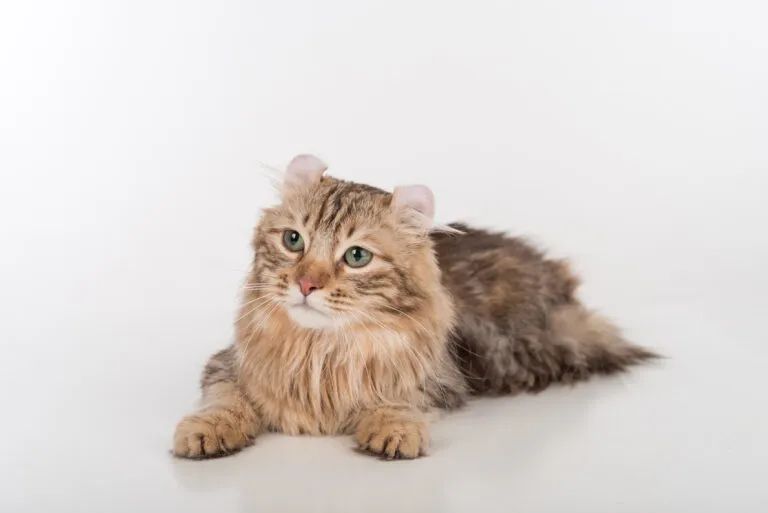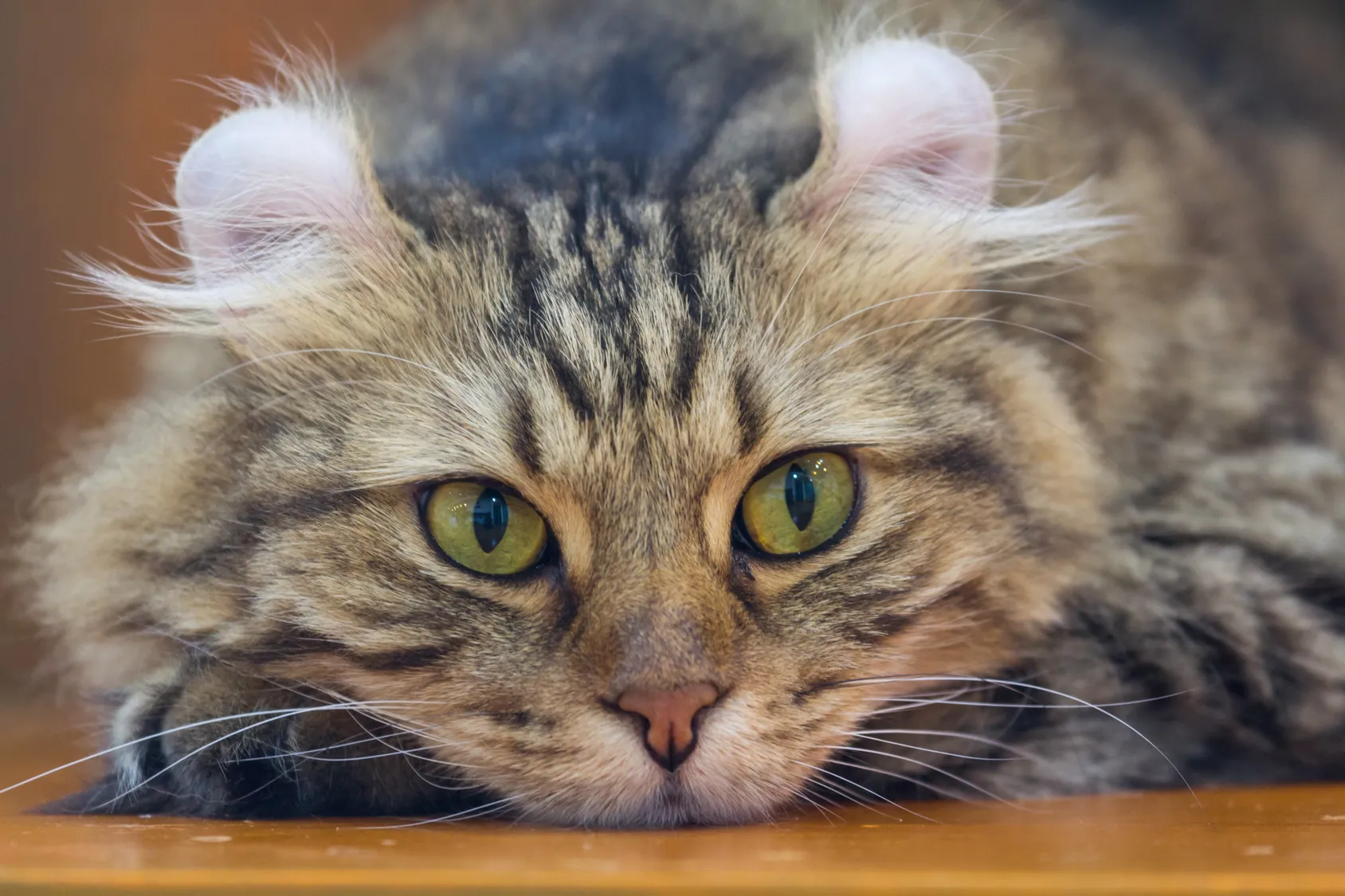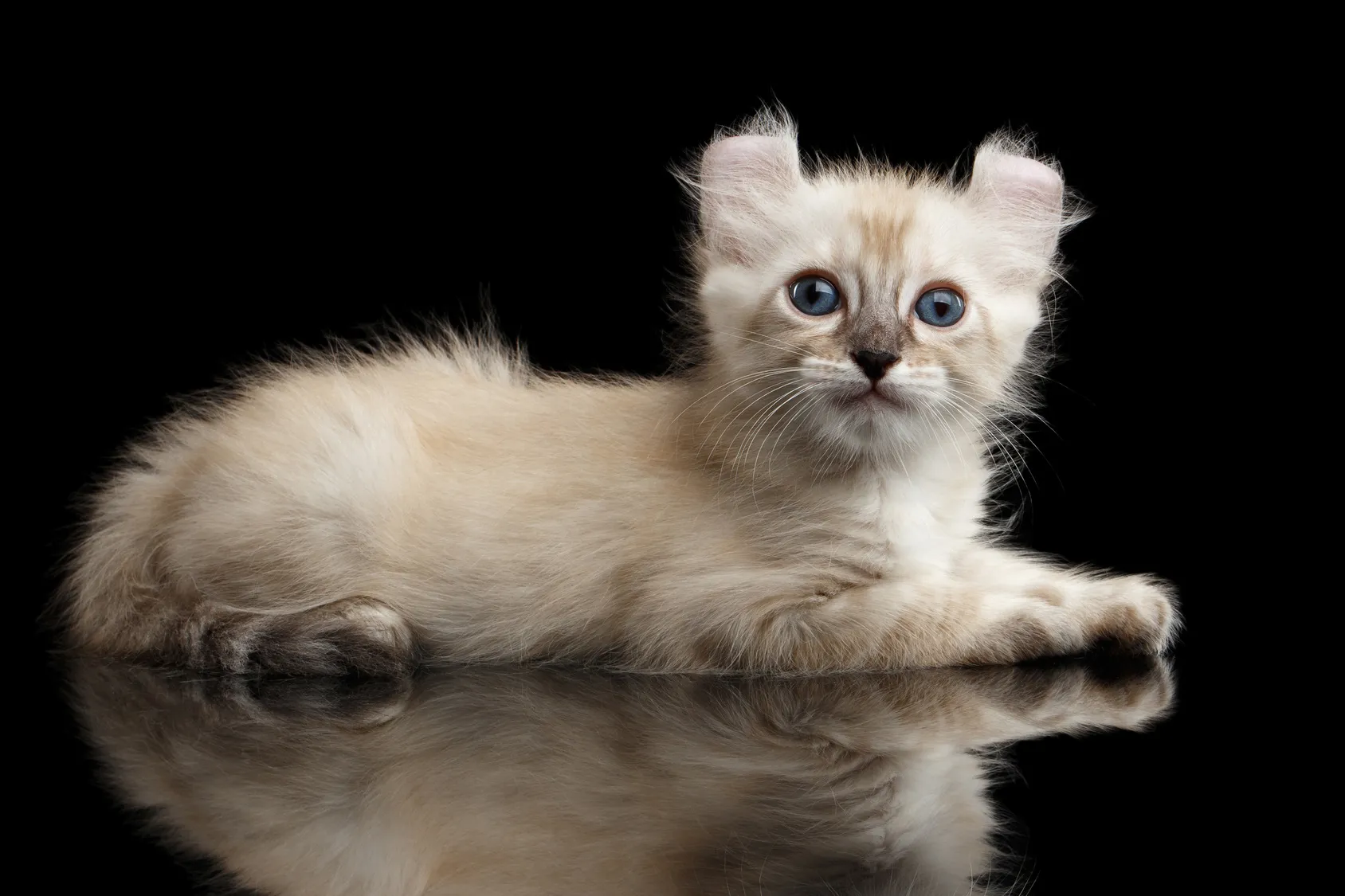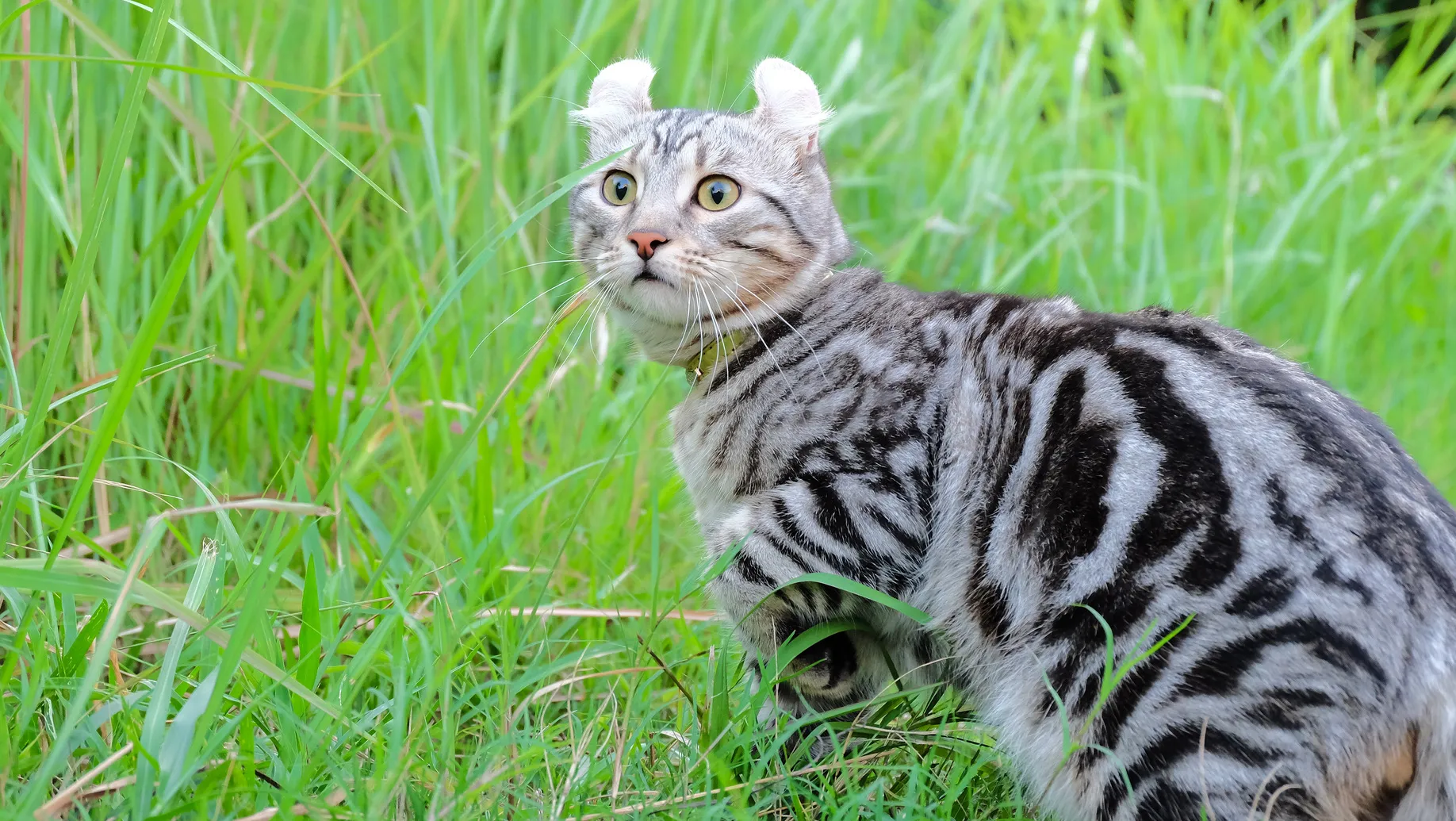Maine Coon
The Maine Coon has become one of the most popular cat breeds in the world. This is probably due to its majestic appearance, robust nature and great character.
The American Curl is a cat breed that draws attention: its curved ears could also pass as an eye-catching headdress conceptualised by a modern designer. In terms of character, the American Curl's domestic cat heritage wins through: it is unspoiled, active and drawn to people.

© white_bcgrd / stock.adobe.com
American Curl cats have gained their name thanks to their unusual curled ears, which are wide at the base with rounded tips, medium-sized and pointing upright. The tips of the ears are adorned with tufts of hair and point towards the middle of the back of the head. For young cats, the ears start to curl up after four to six days, but they only take their final form after several months. The curvature of the ear muscles is individual, varies from cat to cat and can reach up to 180 degrees in extreme cases! Nevertheless, the cat’s hearing is not affected and the ears are just as mobile as those of other animals.
The curvature of the ears demonstrates the quality of the cat according to the breeding standard: first degree cats are pets, whilst second or third degree cats with curled ears are allowed to be breeding or show cats. Ideally, the ears curl into a half-moon shape, the wide base is up to two-thirds straight and then up to a third ends in a bent tip. The angle ranges from 90 to 180 degrees.
These turned-back ear muscles were caused by a chance mutation, with this unusual ear shape then being inherited dominantly. When it comes to cats with the genes to form curved and straight ears, the Cu gene responsible for curly ears always prevails. If both parent animals can form both curled and straight ears, the offspring can end up with both curled and “normal” ears. The latter are known as “American Curl Straight Ear” cats.
The eye-catching ears aren’t the only unique characteristic of this breed though. American Curl cats are medium-sized, and their silky fur has hardly any undercoat and lies flat to their body. The breed comes with several different lengths of fur, though even the long-haired cats hardly moult whatsoever due to the lack of undercoat. All colours of fur are permitted with the American Curl breed, including exotic patterns like lynx point and smoky shades.
The American Curl’s eyes reveal a lot about its character: they are almond-shaped, expressive, open and friendly.
 © rukawajung / stock.adobe.com
© rukawajung / stock.adobe.com
The American Curl is an extraordinarily friendly cat breed, seeking out proximity to humans and particularly children. Hence, they are very suitable family cats! Their character is shaped by their origin as short-haired cats: the breed is very active, open and robust. These intelligent cats love playing games and often even learn to fetch and to open doors. Their vivacity is evident well into old age! American Curl cats are curious and often follow their owners at every turn, but they are not intrusive or talkative like many oriental cat breeds.
The American Curl breed can be traced back to 1981 in California, when a long-haired cat with unusual ears caught the attention of cat lovers Joe and Grace Ruga. The cat begged for a morsel of food and moved in with them soon afterwards. Shulatmith is the ancestress of all American Curls.
After the birth of the first offspring, selective breeding commenced in 1983. Geneticists investigated the genetic foundations of the breed based on 384 kittens and discovered that the gene responsible for the shape of the ears is inherited autosomal dominant: every cat with the Cu gene has this striking ear shape. The British geneticist Roy Robinson also closely examined the health of the breed and was unable to recognise any form of genetic defects. In order to maintain the robustness of the American Curl, cats with straight ears were also allowed to be deployed for breeding as long as they met the American Curl breeding standard.
Thanks to crossing domestic cats in this way, the American Curl is a very healthy breed. In order for this to remain the case, responsible breeding is essential. A professional breeder considers their cats family members and assumes responsibility for them and their offspring. They pair cats thoughtfully and bear in mind individual genetics and the health of the cats when it comes to making a decision. Species-appropriate surroundings and nutrition are important, but of course also cost a lot of money… Nevertheless, a responsible breeder doesn’t just give their kittens away once they reach the age of twelve weeks. Kittens need at least three months to learn vital tips for survival from their mother and siblings! This phase is exciting and tiring at the same time – both for the breeder and the kittens too. In order for the mother to be able to socialise her kittens sufficiently, she should have sufficient rest time between each litter. What makes sense financially isn’t always in the best interest of the animals involved. So take a closer look and don’t let yourself be lulled in by breeders focusing on quantity over quality that offer cheap pedigree cats without the required documentation!
The price of an American Curl depends on its breeding lineage and the curvature of its ears: first degree cats are pets sold to cat lovers with no intention of breeding. Cats with second or third degree curved ears are deployed for breeding or as show cats. Since there are only a few breeders in German speaking countries, the price varies substantially based on supply and demand.

Although this cat breed is considered robust, the curved-back ears can lead to health problems in isolated cases. A narrow ear canal can cause increased wax production and thereby a high risk of infection. The best form of prevention is regularly checking the ears! Excessive ear wax can be removed with a soft, slightly damp cloth. However, avoid directly inserting foreign objects into the ear canal.
There are long and short-haired American Curls. Due to the undercoat of their silky fur being very fine, both varieties don’t moult much. Regular brushing facilitates the change of coat but can be reduced to a few sessions per week.
Like all other cat breeds, American Curls need to see a vet frequently. The vet can recommend practical vaccinations and keep an eye on the cat’s dental hygiene.
High-quality cat food with lots of healthy protein is the best preventive healthcare for American Curls. Cats can only utilise carbohydrates to a limited extent and as carnivores, receive all necessary protein and nutrients from valuable meat.

High-quality cat food with lots of healthy protein is the best form of healthcare for American Curls. Mice, the natural form of nutrition for cats, are made up of around 85% meat and only around 5% vegetable by-products found in the prey’s gastrointestinal tract. Cats can only utilise carbohydrates to a limited extent and as carnivores, receive all necessary protein and nutrients from valuable meat.
The right food for your pedigree cat should therefore have a high meat content. Keep one thing in mind when checking the food label: according to animal feedstuff laws, the list of ingredients should be in descending order of weight. This means that meat should be at the top of the list. Many types of food also contain by-products that aren’t harmful per se. However, damaged organs like the liver and spleen or even hair or horn can be included under the term “meat and animal by-products”. Hence, caution is advised! Grain products too should only be fed in small quantities and should ideally be as far towards the bottom of the ingredients list as possible.
Flavour enhancers and preservatives trigger allergies for many cats, but unfortunately are found in almost every type of food available on the market. It’s a big plus if your American Curl’s favourite food is free of such additives! Sugar also has no place in cat food. Although cats aren’t susceptible to tooth decay, foods with added sugar do damage the kidneys and can lead to diabetes in the long-term.
No worries though: by taking a close look at the food label, it’s not impossible for you to find the right food for your American Curl!
We wish you and your American Curl all the best!
The Maine Coon has become one of the most popular cat breeds in the world. This is probably due to its majestic appearance, robust nature and great character.
Large eyes and attentively upright ears instantly tell you a great deal about this charming breed of cat: Abyssinians are inquisitive and affectionate towards people.
With its long, dense fur, rounded ears, and intense stare, the Pallas Cat, or Manul, looks rather fluffy, yet somewhat dangerous. However, don't be fooled by its appearance—this is no petting zoo resident. The Manul is a wild animal and considered untameable.